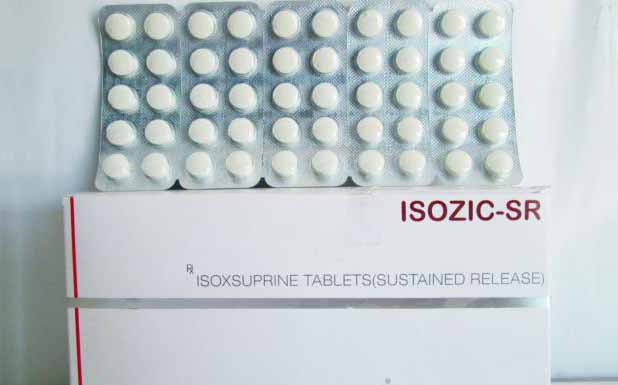Indications
● Premature labor
● Vasodilator for the treatment of cerebral vascular insufficiency,
● Raynaud's phenomenon
● Antidysmenorrheal
Pharmacology
Mechanism of Action:
Isoxsuprine produces peripheral vasodilation by a direct effect on vascular smooth muscle, primarily within skeletal muscle with little effect on cutaneous blood flow. Its effects were once thought to be due to beta-adrenergic receptor stimulation but are not reversed by beta-adrenergic blocking agents. Labor (premature) inhibitor and antidysmenorrheal—Isoxsuprine produces uterine relaxation through a direct effect on smooth muscles.
Pharmacokinetics:
Absorption: Isoxsuprine is well absorbed from the gastrointestinal tract.
Metabolism: Partially conjugated in the blood.
Elimination: Primarily in the urine; fecal excretion insignificant.
Half-life: Approximately 1.25 hours.
Side Effects
Common side effects include:
● Chest pain
● Allergic reaction
● Hypotension
● Pulmonary edema
● Tachycardia
● Nausea or vomiting
Immediately discontinue the use if severe side effects are observed.
Precaution & Warning
● Avoiding smoking
● Caution when getting up from a lying or sitting position, when climbing stairs, or if dizziness occurs
● Checking with physician immediately if contractions begin again or water breaks
Contraindications
It is contraindicated in patients who have cardiovascular disease (especially arrhythmias), hyperthyroidism, chorioamnionitis, bleeding, and eclampsia or severe pre-eclampsia.
